I distinctly remember excitedly asking for the car to be stopped, much to the surprise of my co-passengers. This was on the outskirts of Chikmagalur, very near a coffee estate. Thankfully, the others in the car were aware of my interests in natural history and were themselves interested in nature as well. I got out of the car to take a closer look at the curious plant growing along the roadside. I had just seen my first Cobra Lily!
These were still days when I did not own a camera. So, I made it a point to observe the plant to my heart’s content, not knowing when I would chance upon it again. It is now nearly three decades since this incident transpired.
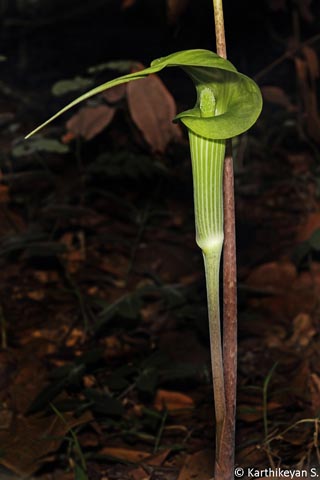
Arisaema leschenaultii from Kudremukh
In the ensuing years, I have seen a few times, the Cobra Lily and its orange/red coloured berries on a long stalk. Recently, I happened to see more than one species of the Cobra Lily in a span of a week while travelling in Nagaland. This reignited my interest in these plants.
I learnt that each plant produces a large leaf-like structure (spathe) which partially encloses a stalk called the spadix bearing tiny flowers. The spathe is often shaped like the hood of a cobra which gives the plant its trivial name – Cobra Lily! In species like Arisaema tortuosum the spadix is long and extends beyond the spathe – like the tongue of a snake.
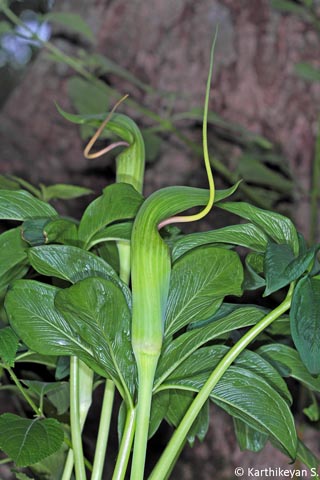
Arisaema tortuosum var neglectum from B.R.Hills
And, in species like Arisaema griffithii that I photographed in Nagaland, the spathe is large and very brightly coloured with the whole flower looking very impressive.
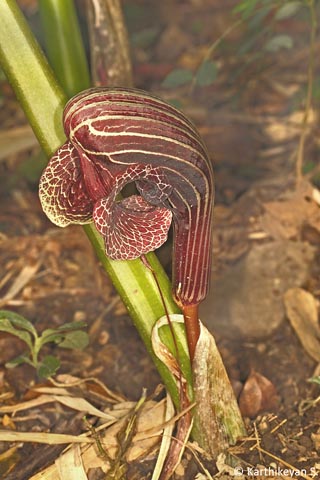
Arisaema griffithi from Nagaland
Besides A. griffithii, I also saw two other species of Arisaema in Nagaland.
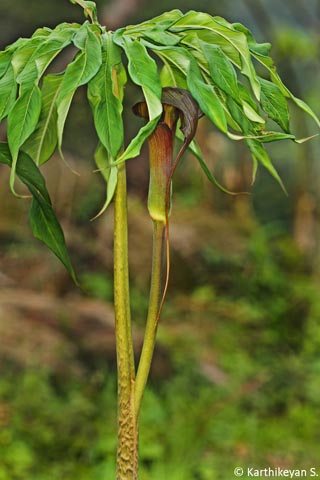
Arisaema consanguineum from Nagaland
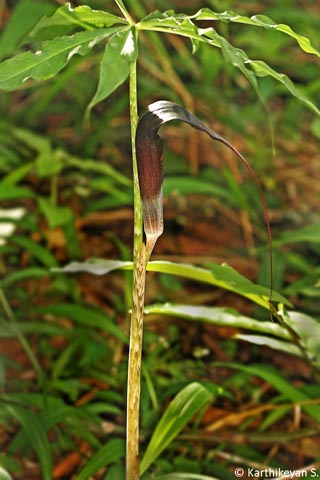
Another species of Cobra Lily from Nagaland
As I mentioned earlier, the spadix bears the flowers. Here is an interesting twist to the story. In case of the Cobra Lily, the spadix bears either male or female flowers at any given time. Many species of Arisaema are known to bear only male flowers when they are still young. As they grow, they manage to store enough resources to produce seeds and go on to bear female flowers. The following year, the same plant, now exhausted and bereft of resources, bears male flowers. So, an individual plant of Arisaema could alternate between being either male or female. This back and forth from male to female and back again can happen several times during the life of the plant. So much for plant ingenuity!
Cobra Lilies are actually relatives of the popular Anthuriums and Peace Lilies as they are to another interesting plant that I wrote about earlier on – the Elephant Foot Yam – all of them belonging to the family Araceae.
And, if you imagined all along that this was a lily… it is not. How does the name matter? It is an interesting plant after all!
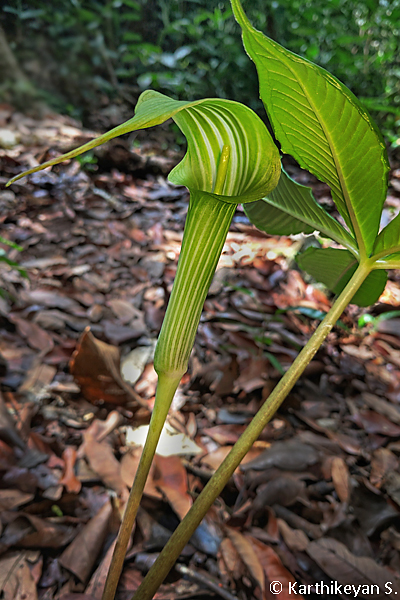
Arisaema leschenaultii from Coorg
Arun Kumar, thank you very much for helping with the identification of these Arisaemas.